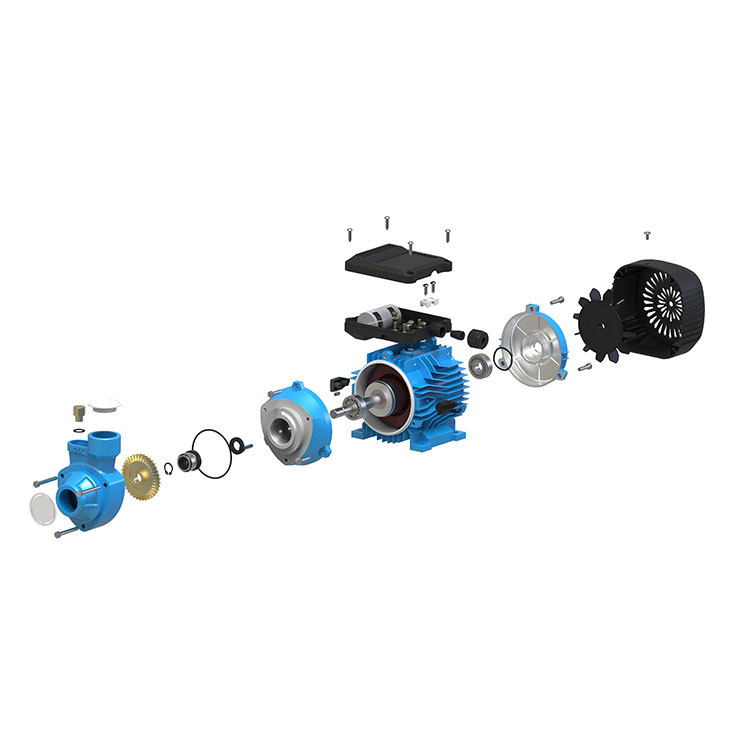Safeguarding Flow: Exploring Safety Features in Household Peripheral Pumps
2024-01-15
Introduction:
Peripheral pumps play a pivotal role in maintaining water circulation within households, ensuring a steady and reliable water supply. The design of these pumps goes beyond mere functionality, with manufacturers incorporating various safety features to enhance user protection and prevent potential issues. In this blog, we'll delve into the safety features integrated into the design of household peripheral pumps, highlighting their importance in promoting a secure and worry-free water system.
1. Overheat Protection: Shielding Against Thermal Stress:
Overheat protection is a critical safety feature in peripheral pumps. It prevents the pump's motor from reaching excessively high temperatures, reducing the risk of damage and ensuring safe operation even during prolonged use or in challenging environmental conditions.
2. Automatic Shut-Off Mechanism: Preventing Unintended Operation:
Many peripheral pumps are equipped with an automatic shut-off mechanism that activates when specific conditions are met. This feature prevents the pump from running unnecessarily or in the absence of water, safeguarding against potential damage and energy wastage.
3. Dry Run Protection: Guarding Against Water Depletion:
Dry run protection is designed to detect when the pump is running without water, commonly referred to as dry running. This feature automatically shuts off the pump to prevent damage caused by operating without proper water lubrication, extending the pump's lifespan.
4. Pressure Switches for Controlled Operation:
Pressure switches are integral safety components in peripheral pumps, helping to maintain optimal pressure levels. They regulate the pump's operation based on water demand, preventing excessive pressure buildup and reducing the risk of damage to the pump or plumbing system.
5. Built-In Thermal Sensors: Monitoring Motor Temperature:
Thermal sensors embedded within the pump continuously monitor the motor's temperature. If the temperature exceeds safe levels, the thermal sensor triggers safety measures, such as temporarily halting the pump's operation until the motor cools down.
6. Leak Detection Systems: Identifying Potential Issues:
Some advanced peripheral pumps feature leak detection systems that identify water leaks in the pump or connected pipes. Detecting leaks early on can prevent water damage and ensure the overall safety and integrity of the water system.
7. Enclosed Wiring for Electrical Safety: Minimizing Hazards:
Electrical safety is a paramount concern in pump design. Enclosed wiring and secure electrical components minimize the risk of electrical hazards, protecting users from potential shocks or accidents.
8. Corrosion-Resistant Materials: Longevity and Safety Combined:
The use of corrosion-resistant materials in the construction of peripheral pumps not only ensures longevity but also contributes to safety. Corrosion resistance prevents deterioration of the pump's components, reducing the risk of malfunctions or structural failures.
9. Low Voltage and Overvoltage Protection: Voltage Control for Stability:
Pumps with low voltage and overvoltage protection mechanisms ensure stable and safe operation within specified voltage ranges. These features guard against electrical fluctuations that could otherwise compromise the pump's performance and safety.
10. User-Friendly Controls and Indicators: Enhancing Operational Safety:
Intuitive controls and clear indicators contribute to user-friendly operation and enhanced safety. Clear markings and easily understandable features empower users to operate the pump safely and troubleshoot issues effectively.
Conclusion:
Safety is paramount in the design of household peripheral pumps, and manufacturers prioritize the integration of features that protect both the pump and its users. From overheat protection to leak detection systems, these safety features work together to ensure reliable and secure water circulation within homes. When selecting a peripheral pump, it's essential to consider these safety aspects, promoting not only the longevity of the pump but also the well-being of the household water system and its users.



